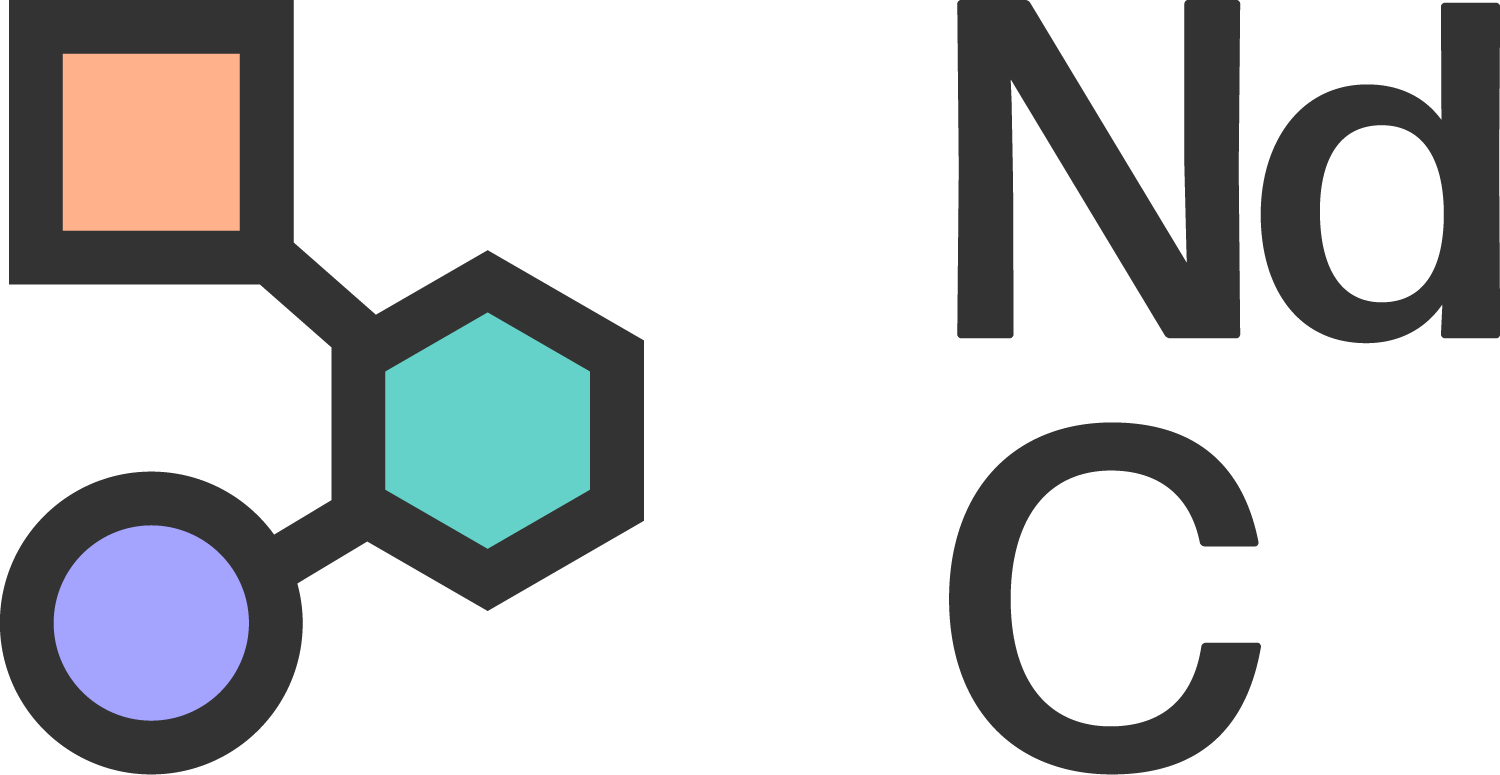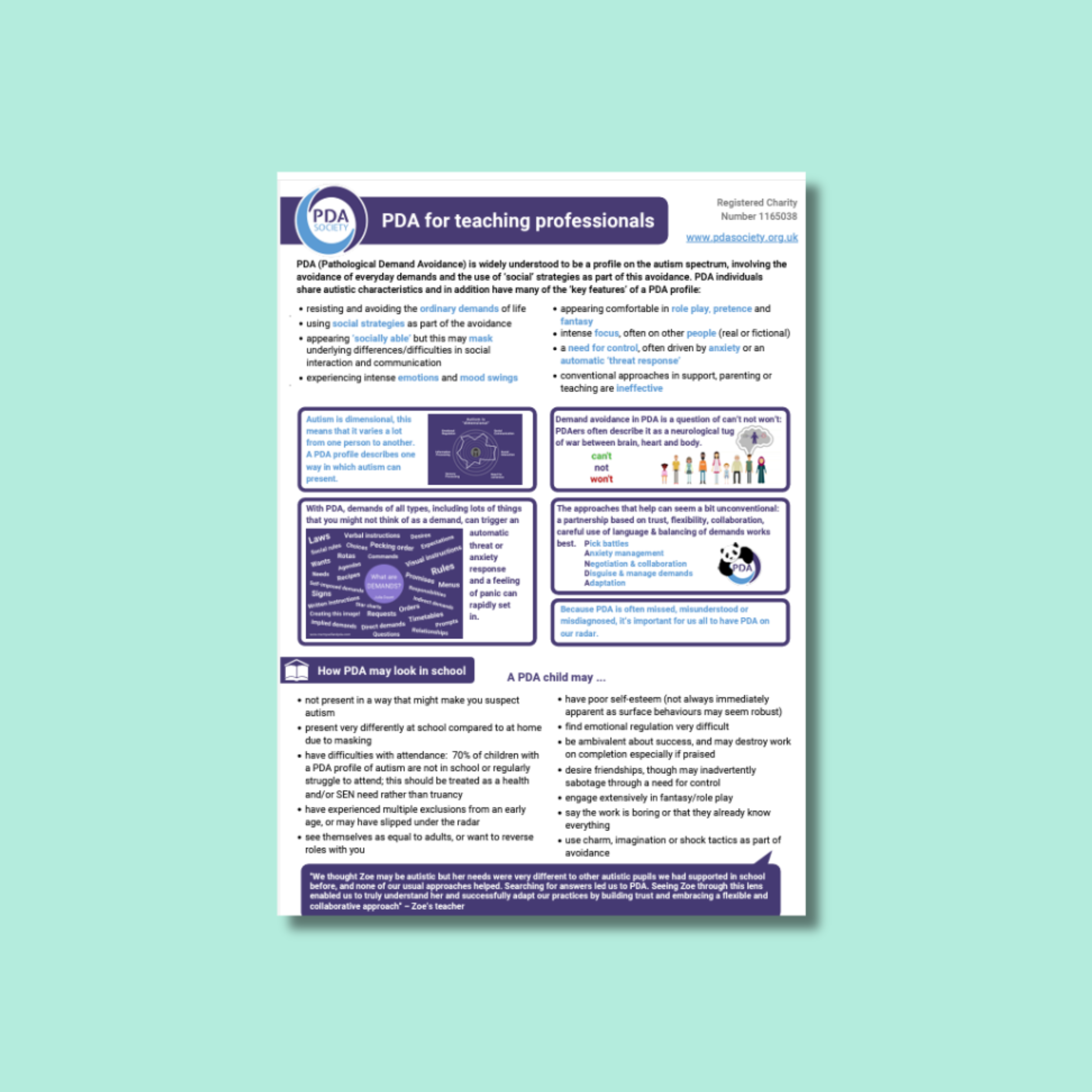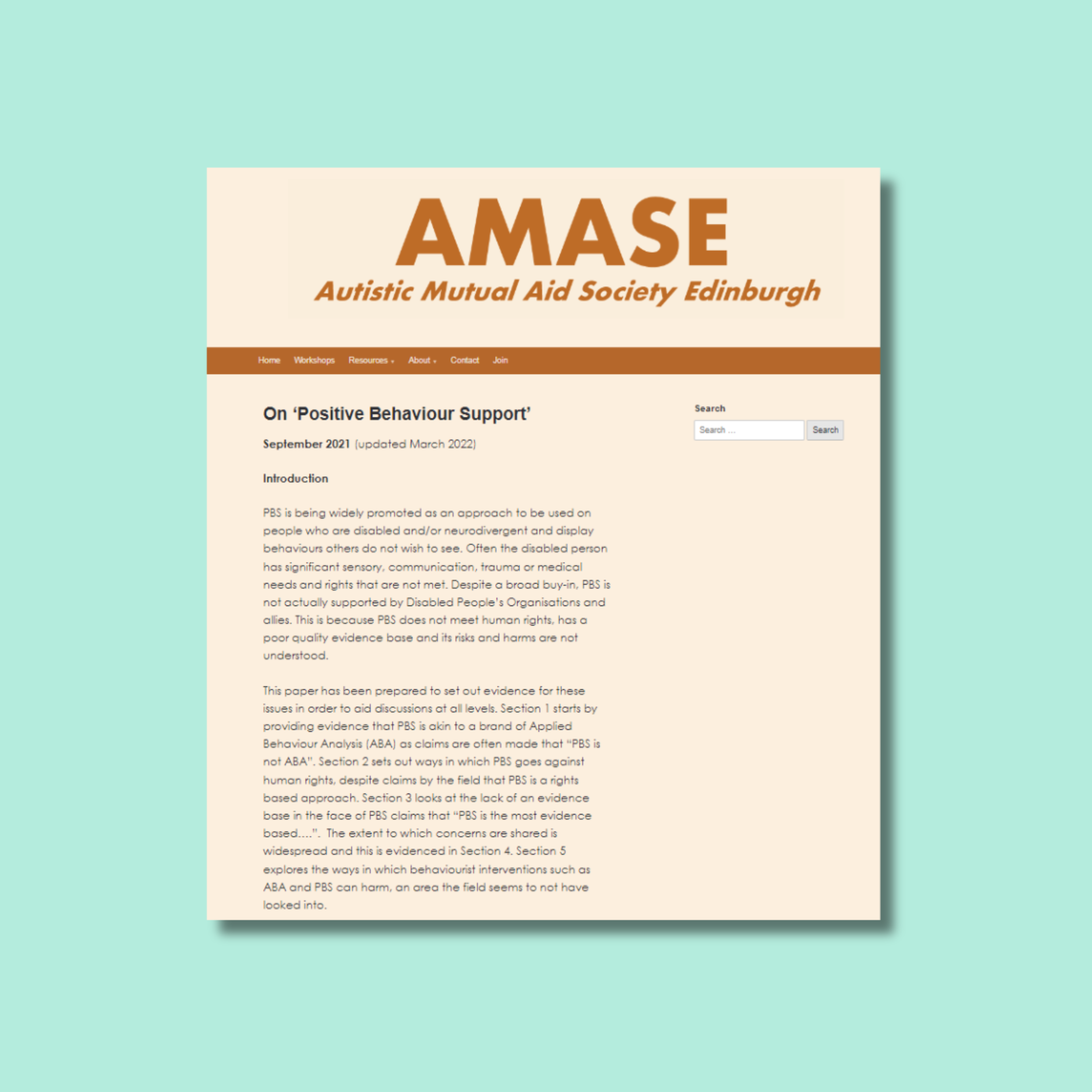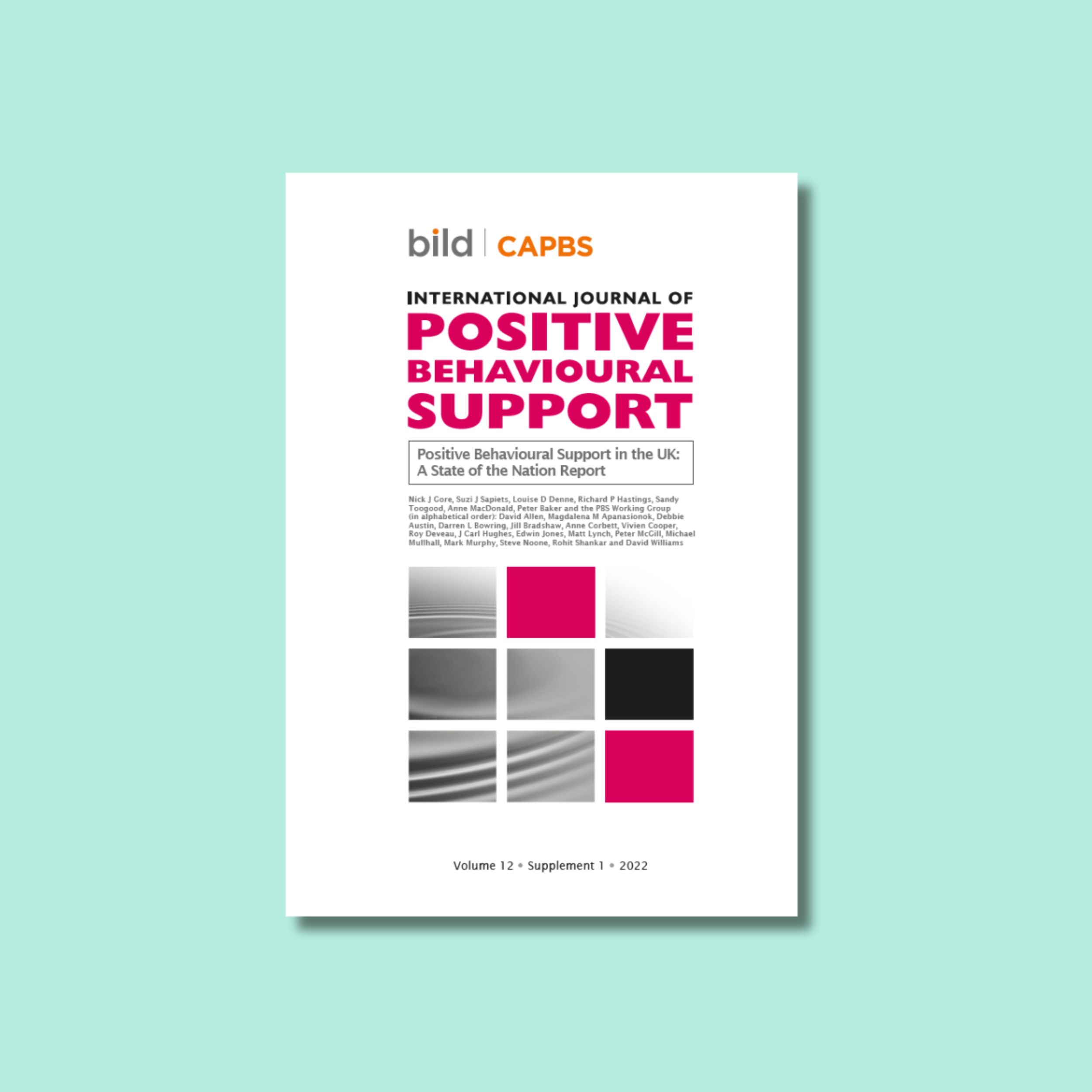Contents
Introduction
Key concerns about PBS and ABA
Compassionate and Neurodiversity-affirming alternatives to PBS and ABA
SPACE Framework
NEST Approach
NAT Key Principles of Quality Care for Autistic People
Key takeaways
Introduction
Why can PBS and ABA be problematic for Neurodivergent individuals?
Behaviourist-based approaches are considered problematic for Neurodivergent individuals because they focus on modifying outward behaviours to conform to societal norms without adequately considering the preferences, needs, or consent of Neurodivergent individuals or seeking to understand the underlying reason, motivation, or internal experiences – emotions, sensations, and thoughts of the individual. This dehumanises the person and leads to masking behaviours and suppression of natural and healthy Neurodivergent traits, such as stimming, which can cause intense distress and trauma, and negatively impact wellbeing. PBS and ABA do not address the systemic and societal barriers Neurodivergent individuals face.
What about PBS and ABA for people with learning disabilities?
Many of the concerns around PBS and ABA that apply to Neurodivergent people are relevant for everyone, including people that have a learning disability.Whilst there is, arguably, a stronger evidence base supporting the effectiveness of PBS for people with learning disabilities, there are significant concerns about the quality of many research studies (Pukki et al 2022). There still isn’t clarity on what people with learning disabilities think about this and how they experience PBS.
We believe that if something isn’t appropriate for Neurodivergent people, this is also true for Neurodivergent people who have a learning disability.
Our collective goal should be to improve life experiences and wellbeing, not modify behaviours to fit normative expectations – for all Neurodivergent people, including those with learning disabilities.
Key concerns about PBS and ABA
-
This is recognised in the International Journal for PBS itself:
“PBS … is not intended for persons identifying as neurodivergent who do not have a learning disability.”
(Gore et al 2022)
In addition, there is a missing high-quality evidence base for its use, and the risks of using it with Neurodivergent individuals are still not fully understood or researched.
Many of the concerns around PBS and ABA that apply to Autistic people are also relevant to those with learning disabilities. There still isn’t clarity on what people with learning disabilities think about PBS or how they experience it.
Gore, N. J., McGill, P., Hastings, R. P., & Allen, D. (2022). Positive Behavioural Support in the UK: A State of the Nation Report. International Journal of Positive Behavioural Support, 12(1), 10–19.
-
PBS and ABA focus on teaching compliance with societal norms rather than addressing the individual’s human rights—autonomy, dignity, and self-determination, plus needs or preferences. This can suppress natural self-expression and create a sense of shame and invalidation. Young children and individuals with communication differences often cannot provide informed consent for ABA or PBS interventions. Families and professionals may also lack full information about the potential long-term impacts of these methods. Some behaviour modification techniques used in behaviourism, like reward systems or punishment, can be perceived as coercive or harmful, especially when applied without considering the individual’s differences and needs.
* Irish Joint Committee on Disability Matters. (2023). Report on aligning disability services with the United Nations Convention on the Rights of Persons with Disabilities. Houses of the Oireachtas. Retrieved from https://data.oireachtas.ie
-
By focusing solely on the modification of observable actions to a neuronormative standard, behaviourism fails to address the underlying reasons behind certain behaviours and the unmet needs they express, neglecting the individual’s internal thoughts, emotions, sensory, social and communication differences and strengths.
Milton, Damian (2018) A critique of the use of Applied Behavioural Analysis (ABA): on behalf of the Neurodiversity Manifesto Steering Group, https://kar.kent.ac.uk/69268/1/Applied%20behaviour%20analysis.pdf
-
Neurodivergent individuals have reported feeling traumatised by these interventions. Techniques such as withholding desired items, repetitive drills, suppression of stimming or ignoring natural communication can lead to masking, chronic stress, trauma, anxiety, and therefore, increased risk and internalised shame.
Kupfrestein, D. (2018). Evidence of increased PTSD symptoms in Autistic individuals exposed to ABA. Advances in Autism, 4(1), 19–29. https://doi.org/10.1108/AIA-01-2017-0010
-
These methods adopt a “fix-it” approach rooted in a medical model of disability and pathology. These perspectives see neurodivergence as a deficit and disorder and aim to ‘normalise’ and ‘treat’ Neurodivergent individuals instead of embracing the neurodiversity paradigm, which views differences as non-deficits and seeks to be curious and understand the unique ways Neurodivergent individuals experience the world. The neurodiversity paradigm and alternative social model of disability seek to change and modify systems and structures, to overcome societal barriers and address the needs of these individuals.
Pukki, H., Bettin, J., Grey Outlaw, A., Hennessy, J., Brook, K., Dekker, M., Doherty, M., Shaw, S. C. K., Bervoets, J., Rudolph, S., Corneloup, T., Derwent, K., Lee, O., Garcia Rojas, Y., Lawson, W., Vidal Gutierrez, M., Petek, K., Tsiakkirou, M., Suoninen, A., Minchin, J., Döhle, R., Lipinski, S., Natri, H., Reardon, E., Villarreal Estrada, G., Platon, O., Chown, N., Satsuki, A., Milton, D., Walker, N., Roldan, O., Herrán, B., Limón Cañedo, C., McCowan, S., Johnson, M., Turner, E. J., Lammers, J., & Yoon, W. (2022). Autistic perspectives on the future of clinical autism research. Autism in Adulthood, 4(1), 1-12. https://doi.org/10.1089/aut.2022.0017
Compassionate and Neurodiversity-affirming alternatives to PBS and ABA
Neurodiversity is the valuable and natural diversity of human minds, the infinite variation in neurocognitive functioning within our species. It acknowledges that there is no ‘normal’ brain or neurotype and that ‘normal’ is socially constructed. The neurodiversity paradigm and being neurodiversity-affirming are important as they view neurodivergence as a natural human difference, not a deficit, defect or disorder and seek to understand and meet individual needs and support strengths.
Compassionate and neurodiversity-affirming alternatives to PBS and ABA prioritise the well-being, autonomy, and individuality of Neurodivergent people. They are informed by Neurodivergent voices, and culture and presume competence, taking a strengths-based approach and tailoring support to individuals’ needs. These alternatives create a supportive and respectful environment which honours individual goals, milestones, needs, and strengths, instead of enforcing conformity.
The following pages contain introductions to three compassionate and Neurodiversity-affirming alternatives to PBS and ABA. As well as being compassionate and neurodiversity-affirming, each of the three approaches:
Are relationship-based, person-centred and regulation-focused
The focus is on compassionate curiosity, collaboration, and understanding differences, alongside empathy, building trust, emotional connection, and co-regulation as the foundation for support, not compliance and control.
Are trauma-informed and prioritise creating safe, supportive space
These approaches recognise and address the impact of past trauma, creating a safe, supportive, structured, and predictable environment for growth. These practices avoid coercive methods and prioritise self- and co-regulation.
Prioritise low-arousal and sensory-friendly environments
Many Neurodivergent individuals have unique sensory differences, needs, and sensitivities. Providing sensory accommodations (e.g., quiet spaces, sensory tools, or predictable routines) can help them feel more comfortable, regulated, and able to engage.
-
Doherty, M., McCowan, S., & Shaw, S. C. K. (2023)
The Autistic SPACE framework is designed to address the unique needs of Autistic individuals, particularly within healthcare settings but the framework would work well across other sectors, including education.
Sensory needs: Recognising and accommodating individual sensory sensitivities and differences to create a comfortable environment.
Predictability: Providing clear expectations and structured routines to reduce anxiety associated with uncertainty.
Acceptance: Fostering an inclusive atmosphere and culture of belonging, that respects and values neurodiversity.
Communication: Utilising effective and accessible communication methods tailored to individual preferences. Using clear, concise, and unambiguous language. Recognising that the ability to use spoken word can fluctuate in times of social and sensory stress and providing alternatives.
Empathy: Demonstrating understanding and compassion towards the internal and external experiences and perspectives of Autistic individuals.
Additionally, the framework emphasises the importance of:
Physical space: Ensuring environments are designed to calm, minimise sensory overload and provide comfort.
Processing/temporal space: Allowing adequate time for individuals to process questions and information and respond without pressure.
Emotional space: Creating a supportive setting where individuals feel safe to express their emotions and have recovery and solitude time.
By implementing the SPACE framework, professionals and care providers can better meet the needs of Autistic individuals, promoting equitable access and positive experiences across various settings.
-
Spectrum Gaming
The NEST Approach, developed by Spectrum Gaming, is designed to support Autistic young people by integrating insights and partnership work with Autistic young people, in addition to drawing on various established models: CPS Model (Dr Ross Greene), the Low Arousal Approach (Professor Andy McDonnell) and the PANDA Approach (The PDA Society).
The framework is structured around four key components:
Nurture: This involves assisting a young person in becoming more relaxed, especially if they are experiencing stress or a meltdown. The focus is on de-escalation, helping the young person to regain calm, as logical thinking is challenging during times of dysregulation and heightened emotion. Strategies carer-givers and professionals are encouraged to deploy, include, appearing to be calm, slowing down movements and gestures, and minimising eye contact, to prevent escalating the young person’s stress. In addition, using distractions, and reducing environmental triggers and demands are suggested, alongside minimising directives, flexing rules and ensuring only one person interacts with them at a time, at a distance.
Empathise: This step emphasises understanding the young person’s internal and external experience and demonstrating this understanding by asking questions that show active listening to support the processing of their feelings and thoughts.
Sharing concerns: This step builds on the one before and is about a deeper exploration of the perspectives of the young person and of others affected, if appropriate.
Teamwork: At this stage, the aim is to address the root cause and begin problem-solving, as a team.
By following these steps, the NEST Approach aims to create a supportive environment that fosters understanding, reduces stress, and promotes positive interactions with Autistic young people.
-
National Autistic Taskforce
The National Autistic Taskforce (NAT), run entirely by autistic people and funded by The Shirley Foundation, created this guide to promote autistic-led, autonomy-focused care for both children and adults in all care settings, including institutional environments. It emphasises self-determination over external control and aims to support care providers, commissioners, and inspectorates in implementing practices that recognise autistic people as experts in their own lives, moving from co-production to autistic leadership.
Key principles of quality care for Autistic people:
Autonomy:
Empower autistic individuals with meaningful choices and decision-making, not just in daily matters but in major life aspects.
Effective communication:
Support all forms of communication across the lifespan, ensuring access to assistive technologies and specialist support.
Autistic person-centred care:
Match care to individual needs and identities, minimise staff changes, and support authentic autistic identity.
Reduce environmental stress:
Regularly assess and adapt environments to reduce sensory and psychological stress, supporting sensory needs, including stimming.
Remove access barriers:
Ensure equitable access to advocacy, healthcare, community participation, and digital inclusion.
Combat stigma and discrimination:
Promote rights-based, inclusive living in the community and challenge stereotypes and institutional bias.
View behaviour as distress, not defiance:
Understand ‘challenging’ behaviours as expressions of unmet needs, not inherent traits. Avoid restraint and focus on environmental and emotional support.
Support transitions:
Plan and prepare for life transitions early, with honesty and predictability to reduce stress.
Autism-specific staff training:
Offer continuous, in-depth training led or designed by autistic people, emphasising empathy, rights, and practical support.
Affirm neurodiversity:
Reject imposed norms. Support autistic identity, routines, and preferences, including solitude and sameness.
This framework advocates for care that respects human rights, centres autistic voices, and replaces behaviour control with understanding, support, and inclusion.
Key takeaways
PBS, ABA and other radical behaviourist approaches may seem helpful and like they ‘work’ but often prioritise compliance and behaviour modification over the holistic well-being and autonomy of Neurodivergent individuals and embed masking behaviours. Application for Neurodivergent individuals who don’t have a learning disability is not evidence based and is not best practice. In addition, there are significant concerns about this approach (eg that it isn’t human rights affirming) that extend beyond this population. There still isn’t clarity on what people with learning disabilities think about this and how they experience PBS.
Many Neurodivergent adults report negative experiences with PBS and ABA, emphasising the need for alternatives that respect their diversity.
Approaches (like the SPACE framework, NEST approach and National Autistic Taskforce’s Key Principles of Quality Care for Autistic People) which are relationship-based, person-centred, regulation-focused, trauma-informed, and prioritise sensory-friendly and low-arousal environments foster dignity, trust, and empowerment. By choosing compassionate and neurodiversity-affirming, respectful alternatives, professionals, families, and caregivers can support Neurodivergent individuals to authentically thrive while cultivating a sense of self-worth, acceptance and belonging.
-
AMASE
https://amase.org.uk/pbs/Doherty, M., McCowan, S., & Shaw, S. C. K. (2023). Autistic SPACE: A novel framework for meeting the needs of Autistic people in healthcare settings. British Journal of Hospital Medicine, 84(4). https://doi.org/10.12968/hmed.2023.0006
Culture of Care Learning Event: Positive Behavioural Support (PBS)
https://youtu.be/q_XFrpkrx5EInternational Journal of PBS https://www.ingentaconnect.com/contentone/bild/ijpbs/2022/00000012
a00101s1/art00001?crawler=true&mimetype=application%2FpdfNational Autistic Taskforce. (2019). An independent guide to quality care for Autistic people. National Autistic Taskforce. Retrieved January 30, 2025, from https://nationalautistictaskforce.org.uk/an-independent-guide-to-quality-care-for-autistic-people/#intro
Neurodiverse Connection – ABA: A Coercive Therapy
https://ndconnection.co.uk/gccsummit2023/aba-and-coercive-controlNeurodiverse Connection Resource Library
https://ndconnection.co.uk/resourcesRose, K., & Pearson, A. (2024). Autistic masking: Understanding identity management and the role of stigma. Pavilion Publishing and Media Ltd.
Spectrum Gaming. (n.d.). The NEST Approach. Spectrum Gaming. Retrieved January 30, 2025, from https://www.spectrumgaming.net/the-nest-approach
Stimpunks Foundation
https://stimpunks.org/why/behaviorism/







